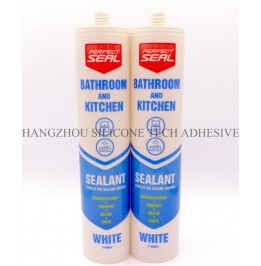Skin Irritation Protection When Working With Bathroom Sealants
Bathroom sealants often contain chemicals like solvents, isocyanates, or amines that can irritate the skin, causing redness, itching, or chemical burns. Proper safety measures reduce exposure risks during application, mixing, or cleanup. Understanding material hazards and adopting preventive strategies ensures worker safety and compliance with occupational health standards.

Sealants rely on volatile organic compounds (VOCs) and reactive agents to achieve adhesion and flexibility. Solvents such as acetone or toluene dissolve resins but evaporate quickly, releasing fumes that may irritate skin through inhalation or direct contact. Isocyanates, common in polyurethane sealants, are potent sensitizers that can trigger allergic reactions after repeated exposure.
Amines used as curing agents in epoxy sealants may cause dermatitis upon contact. Even water-based sealants, though lower in VOCs, can contain preservatives or biocides that irritate sensitive skin. Always review the material safety data sheet (MSDS) to identify hazardous ingredients and their associated risks.
Prolonged or repeated exposure increases the likelihood of adverse reactions. Workers handling sealants daily face higher risks compared to occasional users, emphasizing the need for consistent protective measures.
Gloves are the first line of defense against skin contact. Choose nitrile or butyl rubber gloves, which resist solvents and chemicals better than latex or vinyl. Ensure gloves fit snugly without gaps, and replace them immediately if torn or contaminated. For tasks involving immersion or prolonged handling, double-glove with a thin inner layer for added comfort.
Long-sleeved shirts and pants made from tightly woven fabrics, such as cotton or polyester blends, minimize skin exposure. Avoid loose clothing that may trap sealant droplets. If working in confined spaces, wear disposable coveralls to prevent splashes from reaching the torso or legs.
Eye protection, such as goggles or face shields, prevents accidental splashes from reaching the face or neck. Combine PPE with proper ventilation to reduce inhalation risks, as some airborne particles can settle on exposed skin.
Work in well-ventilated areas to disperse fumes and reduce skin absorption through inhalation. Use local exhaust ventilation (LEV) systems, such as downdraft tables, to capture airborne particles near the application site. Position fans to direct fumes away from the worker’s breathing zone and skin.
Avoid direct contact with wet sealant by using applicators like caulking guns or brushes instead of fingers. If manual spreading is unavoidable, apply a barrier cream to hands before work. These creams create a protective layer that reduces chemical penetration, though they should not replace gloves.
Clean tools and spills promptly with solvents recommended by the manufacturer. Never use bare hands to wipe up sealant; instead, use absorbent materials like rags or paper towels. Dispose of contaminated materials in sealed bags to prevent secondary exposure.
If sealant contacts the skin, act quickly to minimize harm. Remove contaminated clothing and gloves immediately, taking care not to spread the substance. Rinse the affected area with lukewarm water for at least 15 minutes, using a gentle stream to avoid forcing chemicals deeper into the skin.
Avoid using harsh soaps or scrubbing, as this may irritate damaged skin. If the sealant contains solvents, do not apply oils or lotions, as they may trap chemicals. For isocyanate exposure, seek medical attention promptly, as allergic reactions can escalate rapidly.
Employers should provide eyewash stations and emergency showers in work areas where sealants are used. Train workers to recognize symptoms of irritation, such as redness, swelling, or blisters, and to report incidents immediately. Documenting exposure cases helps identify trends and improve safety protocols.
By understanding chemical risks, using appropriate PPE, adopting safe handling practices, and responding effectively to exposure, workers can mitigate skin irritation from bathroom sealants. These measures protect health, reduce downtime, and ensure compliance with workplace safety regulations.
Copyright 2019 by Hangzhou Silicone Tech Adhesive Co., Ltd. All rights reserved.
Bathroom Sealant | Acrylic Sealant | Dow Corning 795 | Aquarium Sealant | Dow Corning 732 | Clear Silicone Sealant | Polysulfide Sealant | Glazing Sealant | Mirror Sealant | IG Sealant
Powered by Onepound